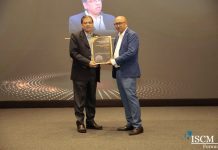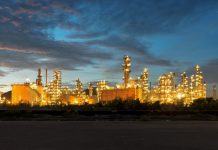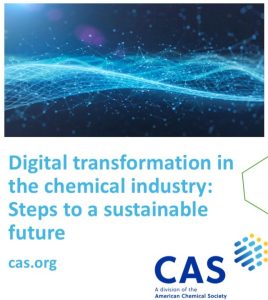In this interaction, Namitesh Roy Choudhury, Vice Chairman and Managing Director of LANXESS India showcases the company’s vision and achievements in sustainability.
Q 1. Chemical Industry Digest (CID): ‘Sustainability’ has become a dominant driving force today; however, purposeful action is needed. Has sustainability become a top management function? Are companies adopting sustainability due to regulatory pressures or are they intrinsically driven realising the benefits of sustainability?
Namitesh Roy Choudhury (NRC): Sustainability has emerged as a dominant driving force for businesses across various industries, including the hydrocarbon and downstream chemical sectors. In many organizations, sustainability has become a top management function, with executives and board members actively involved in setting sustainability goals, formulating strategies, and overseeing implementation efforts. At LANXESS, a certain part of the compensation of the board of management has been directly linked with the organization’s sustainability target achievements. This is a solid demonstration of the commitment LANXESS has towards the topic of Sustainability.
We have integrated sustainability principles into our corporate strategy and operations and this is evident through the consistent recognition that we have received from industry bodies like Confederation of Indian Industry (CII), Federation of Indian Chambers of Commerce and Industry (FICCI), Indian Chemical Council (ICC) and Dow Jones Sustainability Index (DJSI) Europe for our exemplary performances in this areas. We are proud to say that LANXESS India is a front-runner in sustainability within the global LANXESS network. Currently, we are almost 84% climate neutral on Scope 1 and Scope 2 emissions on an annualized basis.
Q 2. CID: The understanding of what exactly is sustainability varies from one company expert to another. What is your definition of sustainability? Can you outline your company’s long-term vision for sustainability?
NRC: At LANXESS, we want to actively shape the transformation of the industry and the global value chains and thus contribute to a more sustainable future.
Our vision of sustainability is to be a responsible and resilient company that creates long-term value for its stakeholders while contributing to a more sustainable future. By integrating sustainability into the core business strategy and operations, LANXESS aims to drive positive environmental, social, and economic outcomes for both the company and society as a whole.
Q3. CID: To be on the road to sustainability a combination of multiple pathways are required. What are the steps you feel industry should take and what steps have you undertaken? Enumerate the steps in brief only.
NRC: LANXESS has undertaken various steps which include investing in renewable energy for our operations, implemented resource-efficient processes, developed sustainable product range by finding alternative raw materials sourced from renewable sources, engaged with stakeholders to ensure responsible practices and participated in the industry initiatives to promote sustainability.
We also provide transparent reporting on sustainability performance and progress towards our goals. LANXESS publishes annual sustainability reports and communicates openly about its sustainability initiatives and achievements.
Q4. CID: How do you integrate sustainability goals into your overall business strategy and into your plant operations? How can industry make a success of circular economy and how can it be integrated into current operations?
NRC: Sustainability is a strategic objective for LANXESS. Our ambition is to be a leading, stable, stable, sustainable, and profitable company. We centre our activities around five key topics that are derived from this ambition.
Five Topics are That area the Core of Our Path to More Sustainability.
- Circular and Sustainable Sourcing:
Our increasingly circular value chains start from a diverse, sustainable raw material portfolio. We engage with our suppliers and relevant stakeholders to improve the working and environmental conditions in the global supply chains. LANXESS has set high standards worldwide for the procurement of raw materials, equipment, machinery, and services. As a founding member of the “Together for Sustainability” initiative, we have established a systematic sustainability risk analysis to evaluate all suppliers.
- Safe and Sustainable Sites:
We manufacture sustainable products at competitive and sustainable chemical sites. Continuous process improvements and investments are fundamental to our success. We care about the communities to which our sites belong.
Common standards for facility planning, construction, and operation ensure a high level of safety across our locations. Global regulations for dangerous goods and transportation safety ensure that hazards are avoided to the greatest possible extent.
- Climate Protection and Energy Efficiency:
For us, climate action based on efficient energy use is the right thing to do for society and also a key to delivering financial performance in the long term. We have been able to reduce our greenhouse gas emissions (Scope 1 + 2) by more than two–thirds since 2004 and we aim to be a climate neutral company by 2040.
The independent “Science Based Targets Initiative” confirms: LANXESS’s climate targets help to limit global warming to 1.5 degrees Celsius.
- Good Governance and Energized Employees:
We aim to be an attractive employer and to develop peoples’ full potential throughout their professional lives. To this end, we create a motivating working environment for all employees, striving for high engagement and impact. We invest in individual career development programs and constantly provide training opportunities to our employees. We nurture and promote a value-based, performance orientated culture.
- Sustainable Products:
We systematically evaluate the sustainability of our portfolio and consider sustainability criteria in the development of products and applications. We have long-term relationships with our customers, drive innovation together and help them to make their business sustainable.
With our brand “Scopeblue” we mark products that contain biobased or recycled raw materials and/or have a significantly reduced carbon footprint. By developing innovative processes and products, we support our customers to make their business more sustainable.
Q 5. CID: In what all ways can industry contribute to the energy transition within the chemical industry? How can industry balance the transition to renewable energy while maintaining operational efficiency and cost-effectiveness? How feasible are renewable energy sources like biomass, solar and wind energy and hydrogen?
NRC: The energy transition in the chemical industry is complex but achievable through a combination of renewable energy adoption, energy efficiency improvements, and innovative technologies. Balancing operational efficiency and cost-effectiveness is crucial, and the feasibility of each renewable energy source varies based on regional and technological factors.
For instance, at our manufacturing plant in Nagda, we have implemented innovative water management practices, such as utilizing domestic sewage from the Grasim colony, treating and reusing the water in our processes. The effluent generated is treated in our Zero Liquid Discharge (ZLD) plant, ensuring no discharge into the environment. This approach has significantly reduced our fresh water usage.
Furthermore, our facility operates a cogeneration plant using biomass, making our electricity and steam production entirely carbon-neutral. These sustainability initiatives required concerted effort, including comprehensive carbon emission assessments, process optimizations, and extensive energy audits.
Similarly, at our Jhagadia site as well, we transitioned from coal to biomass despite potential cost escalation, demonstrating our commitment to sustainable practices over short-term economic gains.
Q 6. CID: What all steps can be taken to reduce carbon footprint, carbon emissions, utilisation of captured carbon dioxide or decarbonisation in general?
NRC: LANXESS has implemented several steps to reduce its carbon footprint and emissions, and to advance decarbonization. Key initiatives include:
- Climate Neutrality Goal: LANXESS aims to be climate neutral by 2040, committing to significantly reducing greenhouse gas emissions
- Energy Efficiency: The company focuses on improving energy efficiency in production processes, adopting new technologies to lower energy consumption
- Renewable Energy: Increasing the use of renewable energy sources in its operations. Shifting towards renewable energy sources such as solar, wind and biomass
LANXESS plays a significant role in driving decarbonization efforts within the Indian chemical industry. It involves investing in R&D, collaborating with stakeholders, advocating for supportive policies, and implementing sustainable practices across its operations and supply chain.
Q7. CID: To sustain the movement forward to sustainability, innovations are crucial, as you would agree. Is industry seized of this importance? To what extent is your R&D doing such work and helping you in achieving your sustainability goals? Can you mention any one major R&D achievement in this regard?
NRC: The One notable innovation/development is our brand ‘Scopeblue’- sustainable product portfolio. The Scopebluelabel of LANXESS identifies product that enable climate-friendly solutions and contribute to a circular economy. They offer a concrete sustainability benefit to our customers. Only products that meet at least one of the following two criteria can receive the Scopeblue label:
- The products contain at least 50% sustainable raw materials + 10% reduced Product Carbon Footprint (PCF)
- The carbon footprint of the products is at least 50% lower than that of conventional products
Sustainable products are the future. To name a few brands which belong to the Scopeblue family include Lewatit® Scopeblue (Based on bio-circular acrylonitrile > 90% sustainable raw materials); TMP® Scopeblue (Uses bio-based n-butylaldehyde 54% sustainable raw materials).
Q8. CID: It has also been articulated by experts that moving on the road to sustainability will also throw up many new business opportunities. Do you agree? What is your experience? And what are the kind of opportunities possible?
NRC: Yes, I absolutely agree. As the society becomes more conscious of environmental issues and seeks sustainable solutions, businesses have vast potential to innovate and provide products & services that meet these demands.
It’s no more about just mitigating the environmental impact; it is also about seizing the economic opportunities that come with creating a more sustainable future.
- Sustainable Construction: Demand for sustainable construction materials, energy-efficient designs, and green building certifications is increasing.
- Water Management: There is a demand for technologies and services that improve water efficiency, treat wastewater, and manage water resources sustainably
- Circular Economy: Embracing the circular economy model, which emphasizes recycling, reuse, and waste reduction, can create opportunities for businesses to develop circular supply chains, product refurbishment services, and remanufacturing processes
- Renewable Energy: Investing in renewable energy sources like solar, wind, and hydroelectric power presents significant opportunities. Companies involved in the production, installation, and maintenance of renewable energy infrastructure stand to benefit.
































